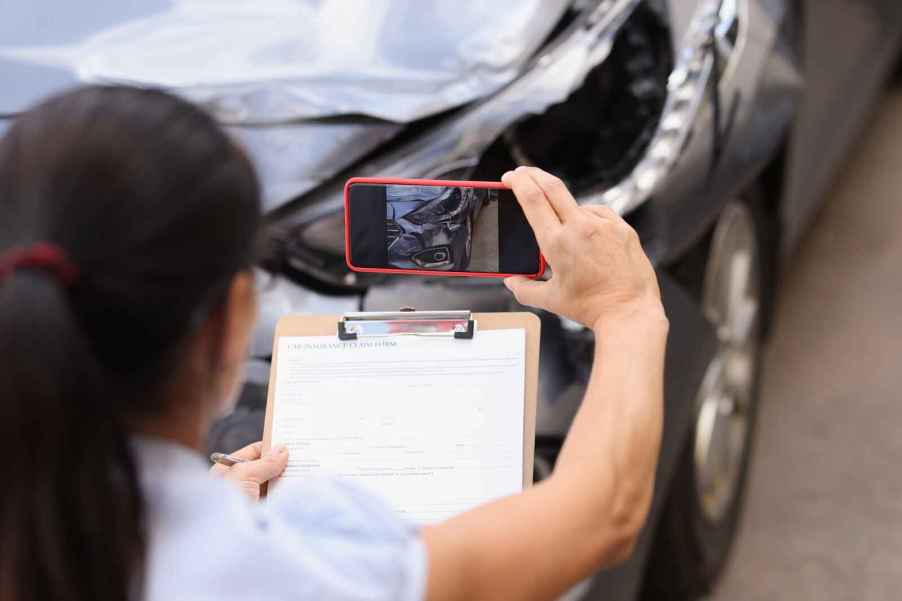
A large auto collision repairer is showing signs of greater ‘economic uncertainty’ in the US
Last year, the NHTSA estimated that the average age of passenger cars in the U.S. was historically high: about 12.5 years old. Despite that metric, this week, an Insurify report predicted that drastic car insurance rate hikes are coming to many American policyholders. The Boyd Group operates over 800 Gerber Collision & Glass locations in the U.S. Interestingly, this month, CEO Tim O’Day explained that the company now sees fewer cars getting approved for repairs after an accident.
So, people are driving older cars that should be cheaper to insure and repair. However, insurance companies will likely increase rates in many states. To boot, cars aren’t getting fixed and put back on the road like they used to. What’s going on here?
Since Boyd is a repairer, the company relies on vehicle owners and their insurance companies choosing to fix cars rather than declare them a total loss. The company recently had its Q2 earnings call. In it, O-Day shared about Gerber’s decline in approved collision repairs, pointing to several areas as likely causes.
“I think it’s a combination of some concern over the economic environment, insurance premiums having gone up significantly over the past couple of years, and a reluctance on the part of some vehicle owners to file a claim,” he said.
We’ve reported that in modern times, car insurance companies face rapidly rising payout expenses. This is due to increased repair and medical expenses associated with collision claims in general.
Per the IIHS, the economic cost of speed-related crashes was about $46 billion in 2019.
Of course, that’s pre-pandemic math. For instance, Insurify reported that in June 2023, the average full-coverage car insurance policy in California cost drivers $1,666. This year, it’s $2,417 – a 45% hike.
Insurify cited increases in theft claims. As we know, Kia and Hyundai models make up a large percentage of recent theft stats. Also, new California regulations require more minimum coverage. Finally, the state defrosted rate hikes it previously froze during the pandemic.
Moreover, new, high-cost, and electric cars move the insurance premium bell curve for the drivers operating older, used cars.
With the threat of increasing rates, some folks won’t even involve their insurance company in collision repairs. As such, drivers might decline high-dollar out-of-pocket estimates.
So, it seems that while many drivers intend to keep their older cars going, circumstances may force them out before they’re really ready.
All things considered, O’Day revealed that repairable claims crept down 7% by the end of last quarter. O’Day also shared that Boyd’s same-store sales declined by 3.2%, Repairer Driven News reported.
What’s more, O’Day mentioned that repair order margins are tighter due to certain insurance companies’ “new” preference for aftermarket parts.
We can assume O’Day was referring to State Farm since it announced it would start approving non-OEM components. In any case, State Farm’s move is another hint at cost-cutting measures in a 2024 economy.
Insurers often “control” collision repairers’ profit margins by only approving certain suppliers, labor times, and labor rates. This is done to keep the final payout down or within budget – often to the detriment of the repairer’s business health.
Despite these challenges, The Boyd Group remained profitable through the quarter, and its CEO maintained a positive outlook. O’Day insisted that while this period of economic uncertainty will seep into Q3, it’s “likely” temporary.
“Over the years, as we’ve seen periods of economic uncertainty, it’s pretty common for people to defer a claim or cash out a claim rather than repair it,” O’Day told investors. “But generally, that behavior bounces back to the other direction over time.”
All told, it makes perfect sense to me that lower repair rates directly connect to the larger economic picture in the U.S. It’s just more expensive for all parties than ever…or at least it sure feels that way.



